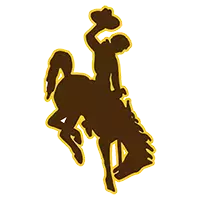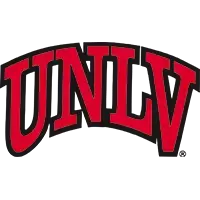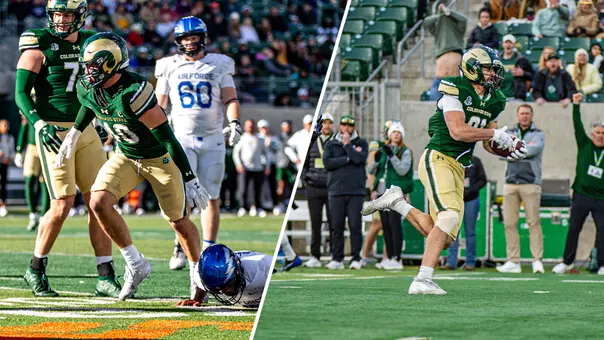Colorado State University Athletics

The Rocky Mountain Rivalry that Nearly Ended in 1958
9/14/2023 2:00:00 PM | Football
Showdown took long hiatus before returning in 1980s
By 1958, college football in the state of Colorado had evolved over the previous 65 years to be more than just a game college boys played for fun and exercise. As the game evolved, and its popularity increased, so did the attitude of the schools. Some put large sums of money toward athletics, especially football, and the level of competition each school played against one another had fluctuated.
After the 1947 season, the University of Colorado athletic department decided to jump from the Skyline Conference to compete in the Big Seven conference with schools like Nebraska, Kansas and Missouri. CU administrators felt at that time the schools of the Skyline Conference were not "big time football" as it was known. CU wanted to step up its level of competition and that could not happen in the Skyline Conference in their opinion. CU went out and changed coaches to Dallas Ward, and although they did not win a conference championship, they did win the 1957 Orange Bowl against Clemson.
The Buffaloes thought they had "nothing to gain and everything to lose" when they played the Aggie-Rams, so they decided to drop CSU from their football schedule after the 1958 game in Boulder. The Buffs wanted to get away from local schools and also dropped Wyoming, DU and BYU in 1948, Utah State in 1950 and Utah in 1962. This allowed them to play all Big Seven schools and have a bigger non-conference game to fill their schedule and seats at Folsom Field.
On November 22, 1958, what had been billed as the last football game ever played between CSU and CU, took place before a crowd of just over 23,000 people at Folsom Field. A beautiful summer-like day for football greeted the two teams as the heavily favored Buffs took a first quarter 7-0 lead on an 84-yard punt return by CU's Leroy Clark. Ward, in his 11th season as Buffs head coach, continued to run the antiquated single wing formation and CSU's Coach Tuffy Mullison continued to run the "T" formation with many modifications from what his coach, Bob Davis first ran in 1947.
With his team behind in the second quarter, Ram halfback Wayne Schneider took a counter play through his left guard, untouched for 83 yards and a touchdown to tie the game at the half. Joe Crider, still in the role as the backup quarterback said in a 2007 interview, "Tuffy really got our guys from Colorado pumped up for that CU game."
All week before the CU contest Mullison continued to tell his team CU thought it was better than CSU and Mullison told his men the smaller school could prevail. Crider said, "The guys believed in themselves and that they could win".
In the second half, CU again went on top and scored another touchdown to make it 14-7. As the clock ticked down toward the end of the game, it appeared that the bigger school would come out on top again, but thanks to Freddy Glick and Wayne Schneider, the Buffaloes did not have the momentum.
With seven minutes left in the game and the ball on their own 19-yard-line, Glick engineered a drive of Hollywood proportions. In the opening series the Aggie-Rams could only drive the ball nine yards after three running plays. On fourth down and a yard and a half to go, Mullison sent Glick in with instructions to get the first down on a risky quarterback sneak. Glick made the first down by just one foot and then he switched to his passing attack.
Glick passed on plays to Schneider, Bill Hanks and Alan Ashbaugh to take the ball down to the CU 28-yard line. With just 4:19 left to play, Glick connected with Schneider for the touchdown and CSU was just one extra point away from a tied game. In a fairytale type ending, a flustered Tuffy Mullison and his football team made a decision that has gone down as one of the greatest endings to a CSU football game.
A new rule had been adopted in college football at the start of the 1958 football season - the two-point conversion. Before that, any pass or running play into the end zone for the point after a touchdown had always been worth just one point. Deemed "the least exciting play in football", the NCAA rules Committee decided to make a pass or run into the end zone, with just one chance to try it worth two points on the play after a touchdown.
Mullison sent Crider into the game to try the two-point conversion since he had been the quarterback who practiced the play the previous week. Crider dropped back to pass and found Schneider in the end zone which made it CSU 15-14. A series of desperation pass attempts by CU in the final two minutes turned up nothing and the lowly CSU football team had beaten the mighty Buffaloes by one point. The front page of the Rocky Mountain News the next morning showed a picture of Schneider as he kissed the game winning football after the conversion.
As the clock expired, Aggie-Ram fans stormed Folsom Field and ripped down the goal posts in celebration. The season fulfilled, CSU went on to barely beat DU in the final game of the year for Mullison's first winning record at 6-4. Ward received extreme criticism and after the 1958 season the university relieved him of his coaching duties. Glick went on to a long career in the NFL and AFL with the St. Louis Cardinals (1959-1960) and the Houston Oilers (1960-1966).
The rivalry didn't end in 1958 as expected, thanks to Fum McGraw and Eddie Crowder getting together in 1983 to bring back the CSU/CU football game. As we head into Rocky Mountain Showdown week, the Rams and Buffs will meet again in Boulder, the oldest rivalry in the state lives on.
After the 1947 season, the University of Colorado athletic department decided to jump from the Skyline Conference to compete in the Big Seven conference with schools like Nebraska, Kansas and Missouri. CU administrators felt at that time the schools of the Skyline Conference were not "big time football" as it was known. CU wanted to step up its level of competition and that could not happen in the Skyline Conference in their opinion. CU went out and changed coaches to Dallas Ward, and although they did not win a conference championship, they did win the 1957 Orange Bowl against Clemson.
The Buffaloes thought they had "nothing to gain and everything to lose" when they played the Aggie-Rams, so they decided to drop CSU from their football schedule after the 1958 game in Boulder. The Buffs wanted to get away from local schools and also dropped Wyoming, DU and BYU in 1948, Utah State in 1950 and Utah in 1962. This allowed them to play all Big Seven schools and have a bigger non-conference game to fill their schedule and seats at Folsom Field.
On November 22, 1958, what had been billed as the last football game ever played between CSU and CU, took place before a crowd of just over 23,000 people at Folsom Field. A beautiful summer-like day for football greeted the two teams as the heavily favored Buffs took a first quarter 7-0 lead on an 84-yard punt return by CU's Leroy Clark. Ward, in his 11th season as Buffs head coach, continued to run the antiquated single wing formation and CSU's Coach Tuffy Mullison continued to run the "T" formation with many modifications from what his coach, Bob Davis first ran in 1947.
With his team behind in the second quarter, Ram halfback Wayne Schneider took a counter play through his left guard, untouched for 83 yards and a touchdown to tie the game at the half. Joe Crider, still in the role as the backup quarterback said in a 2007 interview, "Tuffy really got our guys from Colorado pumped up for that CU game."
All week before the CU contest Mullison continued to tell his team CU thought it was better than CSU and Mullison told his men the smaller school could prevail. Crider said, "The guys believed in themselves and that they could win".
In the second half, CU again went on top and scored another touchdown to make it 14-7. As the clock ticked down toward the end of the game, it appeared that the bigger school would come out on top again, but thanks to Freddy Glick and Wayne Schneider, the Buffaloes did not have the momentum.
With seven minutes left in the game and the ball on their own 19-yard-line, Glick engineered a drive of Hollywood proportions. In the opening series the Aggie-Rams could only drive the ball nine yards after three running plays. On fourth down and a yard and a half to go, Mullison sent Glick in with instructions to get the first down on a risky quarterback sneak. Glick made the first down by just one foot and then he switched to his passing attack.
Glick passed on plays to Schneider, Bill Hanks and Alan Ashbaugh to take the ball down to the CU 28-yard line. With just 4:19 left to play, Glick connected with Schneider for the touchdown and CSU was just one extra point away from a tied game. In a fairytale type ending, a flustered Tuffy Mullison and his football team made a decision that has gone down as one of the greatest endings to a CSU football game.
A new rule had been adopted in college football at the start of the 1958 football season - the two-point conversion. Before that, any pass or running play into the end zone for the point after a touchdown had always been worth just one point. Deemed "the least exciting play in football", the NCAA rules Committee decided to make a pass or run into the end zone, with just one chance to try it worth two points on the play after a touchdown.
Mullison sent Crider into the game to try the two-point conversion since he had been the quarterback who practiced the play the previous week. Crider dropped back to pass and found Schneider in the end zone which made it CSU 15-14. A series of desperation pass attempts by CU in the final two minutes turned up nothing and the lowly CSU football team had beaten the mighty Buffaloes by one point. The front page of the Rocky Mountain News the next morning showed a picture of Schneider as he kissed the game winning football after the conversion.
As the clock expired, Aggie-Ram fans stormed Folsom Field and ripped down the goal posts in celebration. The season fulfilled, CSU went on to barely beat DU in the final game of the year for Mullison's first winning record at 6-4. Ward received extreme criticism and after the 1958 season the university relieved him of his coaching duties. Glick went on to a long career in the NFL and AFL with the St. Louis Cardinals (1959-1960) and the Houston Oilers (1960-1966).
The rivalry didn't end in 1958 as expected, thanks to Fum McGraw and Eddie Crowder getting together in 1983 to bring back the CSU/CU football game. As we head into Rocky Mountain Showdown week, the Rams and Buffs will meet again in Boulder, the oldest rivalry in the state lives on.
Rams Live: David Anderson
Monday, December 08
Colorado State Football: Jim Mora Press Conference
Saturday, December 06
Rams Live Exclusive: Head Coach Jim Mora
Tuesday, December 02
Colorado State Football: Jim Mora Introductory Press Conference
Monday, December 01












